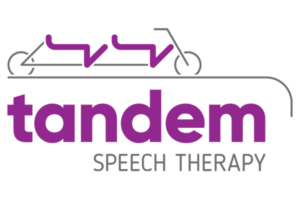*This post was originally published on November 16, 2017*
As a pediatric speech therapist, parents often ask me for recommendations on toys and gifts that help expand speech and language development for young children. The upcoming holiday season is a great time to buy meaningful and learning-based toys. If you have read my Playing With Purpose series, you know that I support play and open-ended toys, which promote learning and overall development for your kiddos. This holiday gift guide includes my list of recommendations for children of any age, but these toys provide optimal opportunities for speech and language development for young children, up to age 5. (This post contains affiliate links to Amazon.)
The holidays are also a nice opportunity to take a little time and take care of yourself. So before you go out shopping for the other important people in your lives, consider treating yourself! I like to treat myself with items for self-care such as a manicure/pedicure or a quiet walk around the lake with my favorite coffee drink. And I like to treat myself by buying myself gifts. One gift I am giving myself in 2019, is the gift of learning–i.e., continuing education. If you are looking to learn a bit more about my work and the benefits of play on language development then treat yourself to my book, “Playing With Purpose.”
When it comes to babies, the most invaluable present regarding speech and language development is YOU. Babies need PEOPLE interacting with them to learn language! Remember, babies start learning language the day they are born For this age group, we want to form strong bonds with our babies during play and expose them to multi-sensory experiences, which enhance their opportunities to build cognitive skills and pre-verbal skills.
For the younger baby, I recommend a mirror like the Sassy Crib and Floor Mirror. Why a mirror? Babies love looking at their reflection, and when you pair the mirror with your commentary about what/who they see, you provide your child with fun, social language, and sensory experiences. When you look in the mirror then to your child and back to the mirror again, you model joint attention, a crucial pre-verbal skill. The mirror can also help provide opportunities for learning the essential pre-verbal cognitive skill of object permanence.
For the older baby, I recommend a stacking tower like the Grimm’s Large Wooden Stacking Tower or a shape sorter such as the Melissa & Doug Shape Sorting Cube. Babies are busy gathering information about the world around them using their senses. Toys that appeal to multiple sensory modalities, including those with bright colors, interesting textures, and sound elements, complements this skill. Through observing and manipulating simple toys, infants learn about cause and effect, which is a foundational cognitive skill. I do not recommend these toys to learn the names of shapes or colors, as babies do not need to be focussing on shapes, numbers, colors or letters just yet! However, they are great for providing plentiful opportunities for cognitive skills such as joint attention and object permanence. They also offer opportunities for learning location concepts such as in, out, on, under, next to, etc.
These next 6 types of toys are well-suited for children who are communicating with intent and are using (or on their way to) speech for communication. Toys that rely heavily on pretend play skills may be more appropriate for those kids age three and up; however, this depends on your own child’s interests and developmental level.
Building toys come in all different shapes, sizes, and configurations. My favorite set is the Melissa & Doug Wood Building Blocks. Blocks and building toys are the educational equivalents of a multivitamin. Children using building toys aren’t just honing their gross and fine motor skills, they’re learning everything from fundamental math concepts to problem-solving skills. Another asset of these block sets and building toys is that they can grow with your child and span the ages. Read my PWP post about building toys.
I cannot talk about toys without including my all-time favorite toy for speech and language development, Mr. Potato Head. I recommend investing in the Mr. Potato Head Tater Tub Set which consists of a tub for storage and many parts to allow you multiple opportunities to practice the same skill. Repetition is vital for young kids acquiring new skills of any kind. Mr. Potato Head is an excellent toy for not only learning body parts but allows children to explore, manipulate things with their hands, be creative, and practice pretend-play skills. Read my PWP post about Mr. Potato Head.
3. Play Sets
All children have their own personality and interests. Some children have an interest in princesses, while others love pirates. This is where your child’s individuality comes into play when selecting gifts.When thinking about gifts that can expand your child’s speech and language skills, consider what interests your child. Highly engaging toys provide more opportunities and motivation for language use. Perhaps your child enjoyed their class trip to the farm so the Melissa & Doug Fold and Go Wooden Barn is a fun choice for helping your toddler work on sounds they make with their lips such as the “moo” for a cow or the “baa” for a sheep. Or perhaps your preschooler is enamored with princesses so the Fisher-Price Little People Disney Princess Song Palace would be an excellent choice. These toys provide your child opportunities to expand their pretend play skills and encourage cooperative play with friends.
4. Playdough
Playdough is excellent to use for speech and language stimulation because it is inexpensive, fun, and can be used to work on almost any skill. Playdough can be used with young children to build early language skills. It can be used to help children improve their speech sound production or to work on phonology skills. Playdough is a fun tool for skills like sequencing, following directions, and answering wh-questions. Simultaneously, playdough is perfect to help kids with sensory and attention challenges, to improve play and fine motor skills, as well as to encourage creativity. I recommend a set such as this Play-Doh Classic Tools Playset which comes with multiple tools and a storage solution. Read my PWP post about playdough.
5. Books
Reading is one of the best ways to help promote speech and language development in children. Books provide countless benefits, such as exposure to new vocabulary, fostering imagination, strengthening listening comprehension, and promoting attention to tasks. Reading to children from a young age has been found to encourage cognitive and language development as well as support later literacy skills. One of my favorite types of books is felt books like the Fuzzy Farm Soft Play Book because it allows your child to create and develop their own story. Read my PWP post about books.
6. Games
Taking turns and sharing are two foundations of communication that children should be exposed to early on. Early cooperative games (i.e., games that require sharing) are perfect for building social language skills, vocabulary, and matching skills. Don’t shy away from more structured cooperative games (i.e., games with specific rules and routines) for older toddlers & preschoolers. You may be surprised at how well your child can follow directions, take turns, and put their negotiation skills to use when playing these games. One of my favorites is the award-winning game, Feed the Woozle because it incorporates movement and has three levels of play so it will grow with your child. Read my PWP post about games.
Need some specialized help with gift selection for an important little one in your life?
Start Playing With Purpose
Learn how to purposefully and intentionally interact with your child during play and help them increase opportunities for speech and language development with our Playing with Purpose book!


























